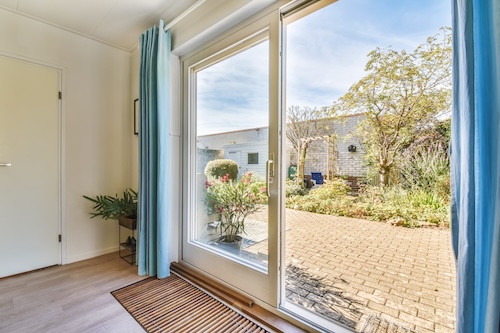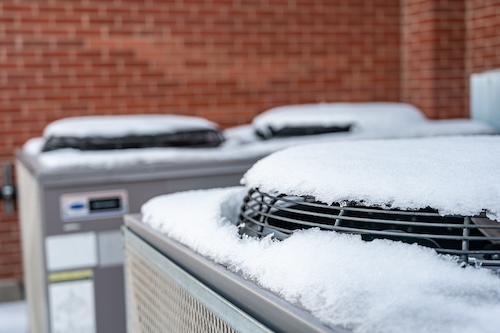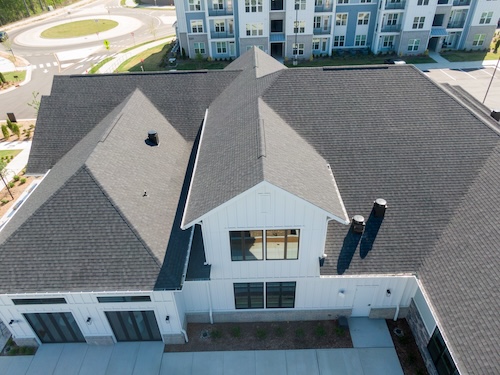As temperatures fluctuate throughout the seasons, these changes can impact the exterior windows of your home. This can compromise the energy efficiency of your windows, and even cause damage during extreme temperature changes or with older windows.
How Temperature Affects Exterior Windows
Fluctuations in temperature can cause your window frames to warp or distort, particularly with more temperature-sensitive materials like aluminum and wood. As the frame expands and contracts with changing temperatures, this can compromise the seal by creating gaps, or it can put excess pressure on the window panes and cause the glass to crack. Especially here in the Midwest, where we experience hot summers and cold winters, homeowners should be aware of the potential damage that can occur due to temperature shifts.
Windows in Cold Temperatures
Cold temperatures make window frames shrink. Minor shrinkage may not be an issue, and modern-day replacement windows are designed with this need for flexibility in mind.. But older window frames may shrink enough that it compromises the seal, decreasing your home’s energy efficiency. This can also cause damage to your window’s hardware, weather stripping, and paint, and may cause thermal stress cracks in the glass panes.
Windows in Warm Temperatures
In contrast to the shrinking frames of cold weather, warmer temperatures make window frames expand. This expansion can warp the frame, creating gaps that affect energy efficiency and significantly reducing window quality. This in turn may decrease the value of your home as the windows become less reliable and effective. Another common symptom of expanding window frames in jamming locks.
How to Protect Your Windows in Fluctuating Temperatures
To protect your windows from possible damage caused by temperature changes, here are a few things you can do:
Inspect Windows Twice Annually
You should inspect all of your windows and doors at least twice a year to make sure everything is working properly, checking for symptoms of damaged, ineffective windows. Beyond obvious, visible damage, look for the following signs of faulty windows:
- Draftiness in your home
- Irregular interior temperatures
- Higher energy bills than expected for the given season
- A/C or furnace working overtime
- Windows and doors jamming or becoming difficult to open or close
- An increase in bugs and pests entering your home
If you discover any issues that may indicate damaged windows, you’ll need to have them repaired or—more likely—replaced.
Weatherproof Your Windows
Take a look at the seals around your windows and doors. Do you notice any gapping? You may be able to fix small gaps with caulk or weather stripping. While this won’t look the nicest cosmetically, it can help improve energy efficiency and extend the life of your windows just a bit longer.
Look at your windows and doors from inside of your house. If you notice any natural light leaking through where it shouldn’t (such as under the door or along the window frame away from the panes), this is a good area to install weather stripping or do some caulking.
Keep in mind that this can only go so far if your windows are very thin or old. If you want to improve your energy efficiency long-term, the best thing you can do is invest in replacement windows.
Invest in Replacement Windows for Energy Efficiency
Replacing your windows with beautiful new ones is the best way to instantly improve your home’s energy efficiency and protect it against fluctuations in temperature! Windows are a primary factor in the energy efficiency of your home, and you really don’t want them failing when temperatures hit extreme highs and lows.
Replacing your windows may seem like a big leap from a little caulking, but it makes a huge difference in the reliability of your windows for energy efficiency and overall functionality. Replacement windows will actually save you money on energy bills while increasing the value of your home. How’s that for a worthwhile investment?
Rolox Windows are Top-Rated for Energy Efficiency!
At Rolox Home Service, we custom-fit your new windows to your home to keep out the chill and protect your home against the elements. Our polyurethane window frame insulation is the ultimate in energy efficiency, and the dual weather-stripping system compresses and protects against even the smallest drafts.
If you’re looking for air-tight construction, Rolox windows have one of the lowest air infiltration ratings on the market at .02. For context, the lower an infiltration rating the better, and typical windows have a rating of .70! You don’t even have to take our word for it—our windows are tested, qualified, and certified by Energy Star and the NFRC, and we exceed their performance guidelines at every turn!
If you’re ready for windows so high-quality that you’ll never again have to think about how the temperatures might be impacting your home, reach out to us to schedule your free quote!





